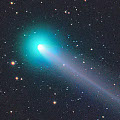
|
It passed only 0.4 A.U. from the earth, and 0.8 A.U. from the sun in November and December, and brightened up to 4.7 mag (Nov. 28, Juan Jose Gonzalez). Now it is 6.1 mag (Jan. 1, Katsumi Yoshimoto). In the Northern Hemisphere, it keeps observable in excellent condition for a long time until 2014 autumn when the comet will fade out. In the Southern Hemisphere, it is not be observable from mid November to early February.
Date(TT) R.A. (2000) Decl. Delta r Elong. m1 Best Time(A, h)
Jan. 4 17 34.01 18 47.5 1.134 0.845 46 5.9 5:38 (262, 22)
Jan. 11 17 45.60 15 37.3 1.245 0.890 45 6.4 5:38 (267, 24)
|
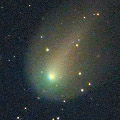
|
Although it was predicted to be 14 mag, it brightened up to 8 mag in outburst in mid October. It is bright as 9.2 mag still now (Jan. 1, Katsumi Yoshimoto). Mitsunori Tsumura reported the comet got active again in December.It will be observable in excellent condition in 2014 spring. In the Northern Hemisphere, it will be getting higher gradually in the morning sky. In the Southern Hemisphere, it is not observable until 2014 February.
Date(TT) R.A. (2000) Decl. Delta r Elong. m1 Best Time(A, h)
Jan. 4 16 37.91 10 30.1 2.227 1.727 47 8.7 5:38 (278, 29)
Jan. 11 16 59.20 9 6.8 2.187 1.694 47 8.6 5:38 (280, 30)
|

|
New bright comet. It brightened very rapidly after discovered on Nov. 6 at 15 mag. Now it is bright as 10.1 mag but diffuse (Dec. 29, Carlos Labordena). It seems to keep 10-11 mag for a while after this. It is observable in excellent condition in the Northern Hemisphere. It locates somewhat low in the Southern Hemisphere.
Date(TT) R.A. (2000) Decl. Delta r Elong. m1 Best Time(A, h)
Jan. 4 11 11.18 35 59.0 0.883 1.650 124 10.9 4:18 (180, 89)
Jan. 11 11 18.45 39 53.4 0.906 1.702 128 11.1 3:58 (180, 85)
|
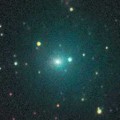
|
It brightened very rapidly, and brightened up to 10.5 mag from autumn to winter. It is bright as 11.8 mag still now (Dec. 29, J. P. Navarro Pina). It will be fading after this. In the Northern Hemisphere, it keeps observable in excellent condition until May when it becomes fainter than 18 mag. It will not be observable after this in the Southern Hemisphere.
Date(TT) R.A. (2000) Decl. Delta r Elong. m1 Best Time(A, h)
Jan. 4 23 54.28 19 28.3 1.409 1.627 83 11.3 18:31 ( 59, 65)
Jan. 11 0 12.06 21 27.2 1.466 1.641 81 11.6 18:36 ( 67, 63)
|

|
Now it is bright as 13.0 mag (Dec. 31, Francois Kugel). It is expected to brighten up to 5-6 mag in 2014 autumn. In the Northern Hemisphere, it will be getting higher gradually after this, and it keeps observable in good condition for a long time. In the Southern Hemisphere, it will not be observable until 2014 February.
Date(TT) R.A. (2000) Decl. Delta r Elong. m1 Best Time(A, h)
Jan. 4 16 22.01 10 49.5 3.984 3.449 50 12.4 5:38 (280, 33)
Jan. 11 16 25.60 11 19.1 3.825 3.373 55 12.2 5:38 (284, 38)
|

|
First return of a new periodic comet discovered in 1998. It brightened up to 10 mag at the discovery. Now it is 11.3 mag (Dec. 30, Uwe Pilz). A bit fainter than originally expected. But in the Northern Hemisphere, it keeps observable in excellent condition from autumn to spring. It locates somewhat low in the Southern Hemisphere.
Date(TT) R.A. (2000) Decl. Delta r Elong. m1 Best Time(A, h)
Jan. 4 6 28.57 37 31.2 1.286 2.247 163 12.3 23:32 (180, 88)
Jan. 11 6 22.73 36 7.8 1.281 2.230 159 12.2 22:59 (180, 89)
|
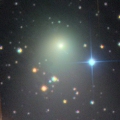
|
It became much brighter than expected, and reached up to 8.5 mag (Aug. 15, Alexandre Amorim). Now it is fading, but it is bright as 11.1 mag still now (Dec. 15, Carlos Labordena). In the Southern Hemisphere, it will keep observable in good condition for a long time until 2014 summer when the comet fades out. It will never be observable again in the Northern Hemisphere.
Date(TT) R.A. (2000) Decl. Delta r Elong. m1 Best Time(A, h)
Jan. 4 15 20.21 -65 43.0 2.812 2.389 55 13.4 5:38 (343,-16)
Jan. 11 15 41.41 -66 22.2 2.851 2.458 56 13.7 5:38 (344,-16)
|

|
Now it is 12.8 mag and visible visually (Dec. 5, Juan Jose Gonzalez). It keeps 13-14 mag and observable in good condition in the Northern Hemisphere for a long time from 2013 to 2014. In the Southern Hemisphere, it is not observable until 2014 autumn.
Date(TT) R.A. (2000) Decl. Delta r Elong. m1 Best Time(A, h)
Jan. 4 21 59.08 77 7.9 3.080 3.445 103 13.7 18:31 (166, 42)
Jan. 11 22 28.90 73 57.4 3.134 3.447 100 13.7 18:36 (162, 44)
|

|
It brightened up to 11-12 mag in 2012. Now it is 14.8 mag (Dec. 10, Hidetaka Sato). It will be observable in good condition at 14 mag until 2014 early summer.
Date(TT) R.A. (2000) Decl. Delta r Elong. m1 Best Time(A, h)
Jan. 4 13 28.47 -14 31.7 7.062 6.917 77 13.9 5:38 (342, 39)
Jan. 11 13 26.93 -14 35.4 6.966 6.950 84 13.9 5:38 (351, 40)
|
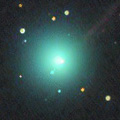
|
It brightened rapidly as expected. It passed the perihelion on Nov. 21, and brightened up to 7.8 mag (Nov. 18, Todd Augustyniak). It will never be observable after this.
Date(TT) R.A. (2000) Decl. Delta r Elong. m1 Best Time(A, h)
Jan. 4 18 50.34 -27 55.2 1.992 1.017 5 13.9 5:38 (291,-19)
Jan. 11 19 16.05 -27 14.9 2.102 1.129 6 14.7 5:38 (291,-18)
|
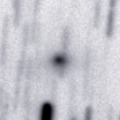
|
It brightened up to 2 mag by unusual major outburst in 2007. It will return in 2014. It will be 14 mag at best by normal prediction. But actually, it is already very bright as 13.5 mag (Nov. 25, Hidetaka Sato). It will be unobservable soon, and keeps unobservable until May.
Date(TT) R.A. (2000) Decl. Delta r Elong. m1 Best Time(A, h)
Jan. 4 20 45.70 -19 49.1 3.003 2.155 25 14.1 18:31 ( 62, 4)
Jan. 11 21 0.40 -18 11.7 3.021 2.140 21 14.0 18:36 ( 66, 2)
|

|
Now it is 12.9 mag (Nov. 27, Sandor Szabo). It keeps bright at 13-14 mag for a long time until 2014. It keeps observable for a long time in the Northern Hemisphere, although it becomes unobservable temporarily in January. In the Southern Hemisphere, it keeps unobservable until March.
Date(TT) R.A. (2000) Decl. Delta r Elong. m1 Best Time(A, h)
Jan. 4 19 34.28 5 59.9 6.948 6.117 30 14.0 18:31 ( 94, 5)
Jan. 11 19 37.11 5 38.0 6.985 6.130 27 14.0 18:36 ( 98, -1)
|

|
Appearing in the morning sky. Now it is faint as 16.9 mag (Dec. 22, Martin Masek).
Date(TT) R.A. (2000) Decl. Delta r Elong. m1 Best Time(A, h)
Jan. 4 15 31.00 -27 42.7 6.805 6.173 46 14.1 5:38 (320, 14)
Jan. 11 15 35.65 -28 4.0 6.718 6.171 52 14.1 5:38 (324, 17)
|
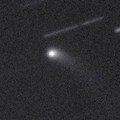
|
Now it is 14.1 mag and visible visually (Nov. 27, Sandor Szabo). It keeps 14 mag for a long time until 2014 summer. It keeps observable in good condition in the Northern Hemisphere. It is observable only until February in the Southern Hemisphere.
Date(TT) R.A. (2000) Decl. Delta r Elong. m1 Best Time(A, h)
Jan. 4 3 8.84 3 59.9 1.486 2.169 121 14.2 20:12 ( 0, 59)
Jan. 11 2 58.91 7 33.2 1.517 2.114 113 14.2 19:35 ( 0, 63)
|

|
Now it is 14.3 mag and visible visually (Dec. 25, Alan Hale). It is expected to brighten up to 7.5 mag and to be observable in excellent condition from summer to autumn in 2014 in the Southern Hemisphere. The condition is bad in the Northern Hemisphere. It will pass extremely close to Mars in 2014 October.
Date(TT) R.A. (2000) Decl. Delta r Elong. m1 Best Time(A, h)
Jan. 4 3 24.33 -38 42.5 3.638 3.942 100 14.5 20:28 ( 0, 16)
Jan. 11 3 14.11 -38 2.9 3.653 3.873 95 14.4 19:50 ( 0, 17)
|
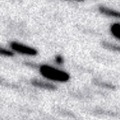
|
It reaches up to 12 mag in 2014 spring. But the condition in this apparition is bad. It locates low around the brightest days. Now it is 15.5 mag (Dec. 20, F. Garcia). It keeps observable in good condition until winter when the comet will brighten up to 15-16 mag.
Date(TT) R.A. (2000) Decl. Delta r Elong. m1 Best Time(A, h)
Jan. 4 21 21.45 -10 27.1 2.879 2.167 36 14.8 18:31 ( 64, 17)
Jan. 11 21 35.46 -9 37.6 2.887 2.128 32 14.7 18:36 ( 68, 14)
|
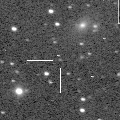
|
Now it is 16.0 mag (Nov. 30, Ken-ichi Kadota). It is expected to brighten up to 13 mag and to be observable in excellent condition from spring to summer in 2014.
Date(TT) R.A. (2000) Decl. Delta r Elong. m1 Best Time(A, h)
Jan. 4 13 19.06 -9 59.6 2.777 2.803 81 14.9 5:38 (344, 44)
Jan. 11 13 27.30 -10 43.1 2.666 2.781 86 14.7 5:38 (351, 44)
|
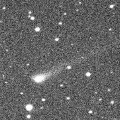
|
It keeps bright as 13-14 mag for a long time from 2013 to 2014. Now it is not observable. But it will appear in the morning sky again in 2014 February.
Date(TT) R.A. (2000) Decl. Delta r Elong. m1 Best Time(A, h)
Jan. 4 17 55.50 -26 19.5 4.025 3.083 14 14.8 5:38 (297, -8)
Jan. 11 18 7.84 -26 29.1 3.992 3.079 18 14.8 5:38 (299, -5)
|

|
Big asteroid discovered in 1906. It suddenly showed the cometary activity on Dec. 11, 2010, probably due to an impact of a small object. It has already turned to be stellar.
Date(TT) R.A. (2000) Decl. Delta r Elong. m1 Best Time(A, h)
Jan. 4 0 24.76 -9 41.0 3.248 3.204 78 14.9 18:31 ( 21, 43)
Jan. 11 0 29.91 -8 34.2 3.354 3.212 73 15.0 18:36 ( 30, 42)
|

|
It was expected to be a great comet as it approached to the sun down to only 0.01 A.U. on Nov. 28. It brightened up to -2.5 mag at best. However, the comet's nucleus disrupted at the perihelion passage. After that, the dust remnant had been visible until Dec. 6 on the STEREO spacecraft images. However, the dust remnant has not been detected by CCD observations on the ground. The nucleus is not detected, fainter than 18 mag (Dec. 13, Lorenzo Comolli). But visual observers reported it was visible at 7.5 mag on Dec. 6 (Piotr Guzik), 7.2 mag on Dec. 7 (Juan Jose Gonzalez), and 9.6 mag on Dec. 9 (Jakub Cerny). It approaches to the earth down to 0.4 A.U. from mid December to early January. It will be observable in excellent condition in the Northern Hemisphere, but it is extremely hard to catch the comet. It is not observable in the Southern Hemisphere.
Date(TT) R.A. (2000) Decl. Delta r Elong. m1 Best Time(A, h)
Jan. 4 17 14.93 79 58.9 0.480 1.192 103 14.9 5:38 (192, 38)
Jan. 11 2 56.72 81 42.5 0.590 1.342 114 16.4 19:43 (180, 44)
|

|
Now it is 15.1 mag (Dec. 13, Ken-ichi Kadota). It will be fading slowly until May when it becomes fainter than 18 mag. It keeps observable in good condition in the Southern Hemisphere. It keeps locating extremely low in the Northern Hemisphere.
Date(TT) R.A. (2000) Decl. Delta r Elong. m1 Best Time(A, h)
Jan. 4 13 19.32 -36 41.6 2.376 2.282 72 15.4 5:38 (350, 17)
Jan. 11 13 23.95 -39 8.5 2.371 2.358 77 15.5 5:38 (355, 16)
|
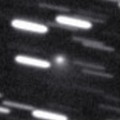
|
Now it is 15.6 mag (Dec. 3, Yasukazu Ikari). It will brighten rapidly and will be observable at 15 mag in winter in excellent condition in the Northern Hemisphere. It locates low in the Southern Hemisphere.
Date(TT) R.A. (2000) Decl. Delta r Elong. m1 Best Time(A, h)
Jan. 4 4 5.27 39 26.3 1.006 1.868 139 15.4 21:10 (180, 86)
Jan. 11 4 6.30 38 30.6 1.026 1.849 133 15.4 20:43 (180, 87)
|

|
It brightened up to 14.0 mag from spring to summer (June 11, Sandor Szabo). Now it is 15.0 mag, much brighter than origianlly predicted (Dec. 11, Hidetaka Sato). In the Northern Hemisphere, it will be observable at 15-16 mag in excellent condition until spring. It locates somewhat low in the Southern Hemisphere.
Date(TT) R.A. (2000) Decl. Delta r Elong. m1 Best Time(A, h)
Jan. 4 13 52.06 6 43.8 4.004 3.959 80 15.5 5:38 (322, 56)
Jan. 11 13 51.52 8 14.9 3.907 3.992 87 15.5 5:38 (333, 61)
|
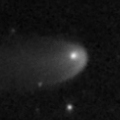
|
Now it is 15.5 mag (Nov. 30, Ken-ichi Kadota). It will be fading after this, but it keeps brighter than 18 mag until 2015 spring.
Date(TT) R.A. (2000) Decl. Delta r Elong. m1 Best Time(A, h)
Jan. 4 3 9.89 -21 20.9 7.180 7.559 109 15.8 20:14 ( 0, 34)
Jan. 11 3 7.78 -20 31.2 7.301 7.592 103 15.8 19:44 ( 0, 35)
|

|
It approached to the sun down to 0.73 A.U. on Mar. 24, and brightened up to 4.7 mag (Mar. 11, Michael Mattiazzo). Now it is fading. It has already faded down to 15.1 mag (Dec. 15, F. Garcia). In the Northern Hemisphere, it keeps observable in good condition while fading gradually. In the Southern Hemisphere, it will never be observable again.
Date(TT) R.A. (2000) Decl. Delta r Elong. m1 Best Time(A, h)
Jan. 4 19 57.05 49 0.9 4.337 4.157 72 16.0 18:31 (131, 30)
Jan. 11 20 5.17 49 24.8 4.436 4.232 71 16.1 18:36 (133, 27)
|
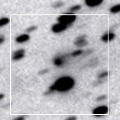
|
Now it is 15.3 mag (Dec. 24, Mt. Lemmon Survey). It tends to be brightest 4 months after the perihelion passage. It will reach up to 15.5 mag from autumn to winter, and will be observable in excellent condition.
Date(TT) R.A. (2000) Decl. Delta r Elong. m1 Best Time(A, h)
Jan. 4 6 7.03 19 59.9 1.343 2.313 167 16.0 23:10 ( 0, 75)
Jan. 11 6 1.81 20 31.9 1.399 2.347 159 16.1 22:38 ( 0, 76)
|
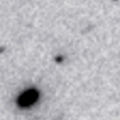
|
It is expected to brighten up to 13 mag and to be observable in good condition in 2015. Now it is 16.7 mag (Dec. 11, Hidetaka Sato). In 2014, it will be observable at 15 mag in good condition from winter to summer.
Date(TT) R.A. (2000) Decl. Delta r Elong. m1 Best Time(A, h)
Jan. 4 13 44.80 -4 40.3 5.450 5.323 77 16.4 5:38 (333, 47)
Jan. 11 13 48.58 -4 47.4 5.298 5.279 83 16.3 5:38 (341, 48)
|
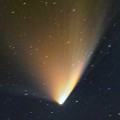
|
It passed the perihelion on Mar. 10, and brightened up to 0-1 mag. Now it is fading. It has already faded down to 15.6 mag (Dec. 22, Ken-ichi Kadota). In the Northern Hemisphere, it is getting higher in the morning sky again. But it will be fainter than 18 mag in late January. It is not observable in the Southern Hemisphere.
Date(TT) R.A. (2000) Decl. Delta r Elong. m1 Best Time(A, h)
Jan. 4 16 59.37 26 5.5 5.113 4.646 56 16.5 5:38 (259, 33)
Jan. 11 17 4.05 26 26.3 5.142 4.722 59 16.7 5:38 (262, 38)
|
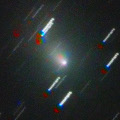
|
It brightened up to 9-10 mag in 2013 spring. Now it is fading. It has already faded down to 15.8 mag (Oct. 7, Hidetaka Sato). In the Southern Hemisphere, it keeps observable for a long time until the comet fades out, although it keeps locating low. It will never be observable again in the Northern Hemisphere.
Date(TT) R.A. (2000) Decl. Delta r Elong. m1 Best Time(A, h)
Jan. 4 16 16.91 -65 51.9 3.919 3.374 50 16.6 5:38 (339,-20)
Jan. 11 16 33.55 -66 13.4 3.955 3.443 52 16.7 5:38 (340,-19)
|

|
Now it is 16.7 mag (Dec. 13, Ken-ichi Kadota). It keeps 16 mag for a long time until 2015 summer. It keeps observable in good condition in the Northern Hemisphere. It becomes observable only after 2015 in the Southern Hemisphere.
Date(TT) R.A. (2000) Decl. Delta r Elong. m1 Best Time(A, h)
Jan. 4 4 52.22 53 26.0 3.531 4.341 141 16.6 21:56 (180, 72)
Jan. 11 4 46.72 53 32.3 3.544 4.305 135 16.6 21:23 (180, 71)
|

|
It brightened up to 12-13 mag from autumn to winter in 2012. Now it is fading. It has already faded down to 16.8 mag (Dec. 23, J. Lozano). It keeps observable for a long time until March when the comet becomes fainter than 18 mag.
Date(TT) R.A. (2000) Decl. Delta r Elong. m1 Best Time(A, h)
Jan. 4 5 42.94 -2 14.6 3.949 4.819 149 16.9 22:47 ( 0, 53)
Jan. 11 5 39.77 -2 22.6 4.035 4.865 144 17.0 22:16 ( 0, 53)
|
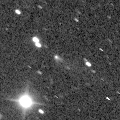
|
Now it is 17.7 mag (Dec. 16, E. Cozzi). It keeps 17 mag for a long time from 2013 summer to early 2015.
Date(TT) R.A. (2000) Decl. Delta r Elong. m1 Best Time(A, h)
Jan. 4 1 44.17 12 41.9 2.652 3.063 105 16.9 18:49 ( 0, 68)
Jan. 11 1 48.20 12 51.2 2.742 3.058 99 17.0 18:36 ( 7, 68)
|
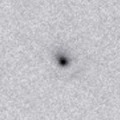
|
Now it is 17.5 mag (Nov. 24, Y. Sugiyama). Brighter than origianlly predicted. It will be observable at 12-13 mag in excellent condition from 2014 summer to 2015 spring. In the Southern Hemisphere, it will locate low around the highlight.
Date(TT) R.A. (2000) Decl. Delta r Elong. m1 Best Time(A, h)
Jan. 4 0 22.84 -3 55.0 3.111 3.102 80 17.1 18:31 ( 24, 48)
Jan. 11 0 27.62 -3 0.5 3.173 3.065 74 17.0 18:36 ( 34, 46)
|

|
Now it is 17.8 mag (Dec. 1, J. De Queiroz, R. Behrend). It keeps close to the earth around 0.7 a.u. until spring. It will brighten up to 16.5 mag in February and March, and will be observable in excellent condition in the Northern Hemisphere. It locates very low in the Southern Hemisphere.
Date(TT) R.A. (2000) Decl. Delta r Elong. m1 Best Time(A, h)
Jan. 4 0 45.46 21 45.3 0.713 1.269 95 17.3 18:31 ( 37, 74)
Jan. 11 0 57.64 23 16.5 0.705 1.229 91 17.1 18:36 ( 53, 72)
|
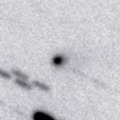
|
First return of a new periodic comet discovered in 1998. Now it is 16.4 mag (Dec. 22, Toshiyuki Takahashi). It is fainter than originally expected by 1-2 mag. It was expected to be observable at 15 mag in good condition from 2013 autumn to early 2014. But actually, it will be 17 mag at best.
Date(TT) R.A. (2000) Decl. Delta r Elong. m1 Best Time(A, h)
Jan. 4 1 45.00 -11 56.8 2.238 2.536 95 17.3 18:50 ( 0, 43)
Jan. 11 1 50.08 -9 54.5 2.311 2.531 91 17.4 18:36 ( 3, 45)
|
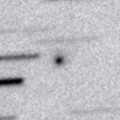
|
Now it is 17.6 mag (Dec. 7, J. F. Hernandez). It is expected to brighten up to 6 mag in 2014 autumn. At this time, it keeps observable while brightening gradually until April when it becomes 16 mag.
Date(TT) R.A. (2000) Decl. Delta r Elong. m1 Best Time(A, h)
Jan. 4 6 26.10 22 48.0 3.050 4.027 172 17.5 23:29 ( 0, 78)
Jan. 11 6 13.39 22 37.9 2.999 3.948 162 17.3 22:49 ( 0, 78)
|
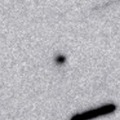
|
Now it is 17.5 mag (Dec. 7, Catalina Sky Survey). It keeps 15-16 mag for a long time from 2015 to 2016. In this winter, it is observable at 17.5 mag until March.
Date(TT) R.A. (2000) Decl. Delta r Elong. m1 Best Time(A, h)
Jan. 4 2 55.31 -4 53.0 6.538 7.006 114 17.5 19:59 ( 0, 50)
Jan. 11 2 53.45 -4 13.5 6.608 6.973 107 17.5 19:30 ( 0, 51)
|

|
Now it is 17.8 mag (Dec. 17, E. Cozzi). It will approach to the earth down to 0.68 a.u., brighten up to 16 mag, and will be observable in excellent condition.
Date(TT) R.A. (2000) Decl. Delta r Elong. m1 Best Time(A, h)
Jan. 4 12 23.20 33 58.2 1.298 1.870 109 17.7 5:30 ( 0, 89)
Jan. 11 12 29.44 33 12.7 1.211 1.841 113 17.5 5:08 ( 0, 88)
|
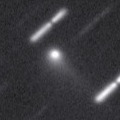
|
It brightened rapidly and reached up to 13.7 mag in autumn (Oct. 2, Uwe Pilz). A few visual observers reported it as 12 mag. Now it is fading. But it is bright as 15.4 mag still now (Dec. 16, A. Klotz, F. Kugel, J. Nicolas). It will be fainter than 18 mag in January.
Date(TT) R.A. (2000) Decl. Delta r Elong. m1 Best Time(A, h)
Jan. 4 23 12.11 10 43.8 2.631 2.484 70 17.6 18:31 ( 60, 51)
Jan. 11 23 24.00 11 36.4 2.737 2.516 66 17.7 18:36 ( 66, 48)
|
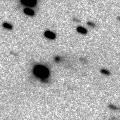
|
Now it is 16.8 mag (Dec. 23, Mt. Lemmon Survey). It will be observable at 17 mag in excellent condition from autumn to winter.
Date(TT) R.A. (2000) Decl. Delta r Elong. m1 Best Time(A, h)
Jan. 4 2 44.41 15 40.8 1.957 2.595 120 17.6 19:49 ( 0, 71)
Jan. 11 2 48.02 15 41.3 2.039 2.598 113 17.7 19:25 ( 0, 71)
|
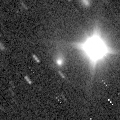
|
It was observed at 15-16 mag in 2012. Now it is fading slowly. But it keeps 17.5 mag still now (Dec. 13, J. F. Hernandez). It will be fainter than 18 mag in January. It locates low in the Southern Hemisphere.
Date(TT) R.A. (2000) Decl. Delta r Elong. m1 Best Time(A, h)
Jan. 4 0 10.33 10 11.6 5.165 5.141 83 17.6 18:31 ( 40, 60)
Jan. 11 0 11.34 9 29.9 5.332 5.183 76 17.8 18:36 ( 51, 55)
|
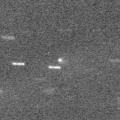
|
Now it is 19.3 mag (Dec. 14, W. Hasubick). In this winter, it is observable at 17.5 mag in good condition until March.
Date(TT) R.A. (2000) Decl. Delta r Elong. m1 Best Time(A, h)
Jan. 4 10 57.50 10 8.2 1.804 2.466 121 17.7 4:04 ( 0, 65)
Jan. 11 10 58.24 10 3.7 1.746 2.481 128 17.7 3:38 ( 0, 65)
|

|
Now it is 17.9 mag (Dec. 8, Hidetaka Sato). It will brighten up to 14 mag around the perihelion passage in 2019. In 2013, it will be observable in good condition at 18 mag from summer to winter. It locates low in the Southern Hemisphere.
Date(TT) R.A. (2000) Decl. Delta r Elong. m1 Best Time(A, h)
Jan. 4 2 43.10 27 1.3 12.978 13.534 122 17.9 19:47 ( 0, 82)
Jan. 11 2 42.25 27 0.6 13.053 13.506 115 17.9 19:19 ( 0, 82)
|
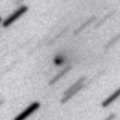
|
Now it is 16.8 mag (Dec. 23, G. Hug). It keeps observable at 17.5 mag in good condition from autumn to winter.
Date(TT) R.A. (2000) Decl. Delta r Elong. m1 Best Time(A, h)
Jan. 4 7 5.51 22 50.7 1.374 2.357 178 17.9 0:14 ( 0, 78)
Jan. 11 6 59.12 23 40.3 1.408 2.387 172 18.0 23:35 ( 0, 79)
|

|
Now it is 18.6 mag (Nov. 24, A. Maury, J.-F Soulier, J. G Bosch). It keeps 18-19 mag for a long time until 2015. It is observable at 18 mag in good condition in this winter.
Date(TT) R.A. (2000) Decl. Delta r Elong. m1 Best Time(A, h)
Jan. 4 5 54.86 9 38.5 6.674 7.605 159 17.9 22:58 ( 0, 65)
Jan. 11 5 49.72 9 15.6 6.716 7.607 153 17.9 22:26 ( 0, 64)
|
|
![]()
 292P/2013 O1 ( Li )
292P/2013 O1 ( Li ) C/2013 V5 ( Oukaimeden )
C/2013 V5 ( Oukaimeden ) C/2013 V4 ( Catalina )
C/2013 V4 ( Catalina ) 124P/Mrkos
124P/Mrkos P/2013 J2 ( McNaught )
P/2013 J2 ( McNaught ) 291P/2013 N2 ( NEAT )
291P/2013 N2 ( NEAT ) C/2012 A2 ( LINEAR )
C/2012 A2 ( LINEAR ) 266P/2012 P1 ( Christensen )
266P/2012 P1 ( Christensen ) C/2010 U3 ( Boattini )
C/2010 U3 ( Boattini ) 178P/Hug-Bell
178P/Hug-Bell C/2012 A1 ( PanSTARRS )
C/2012 A1 ( PanSTARRS )![]()











































